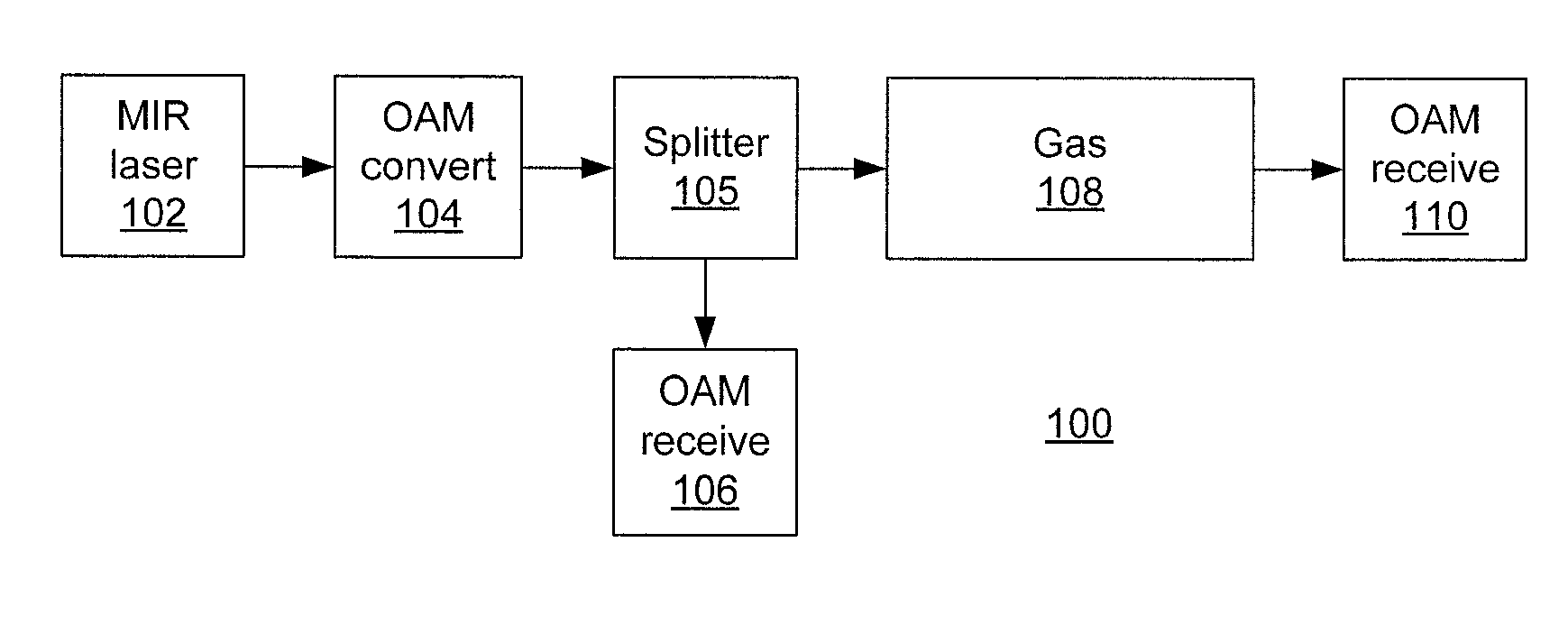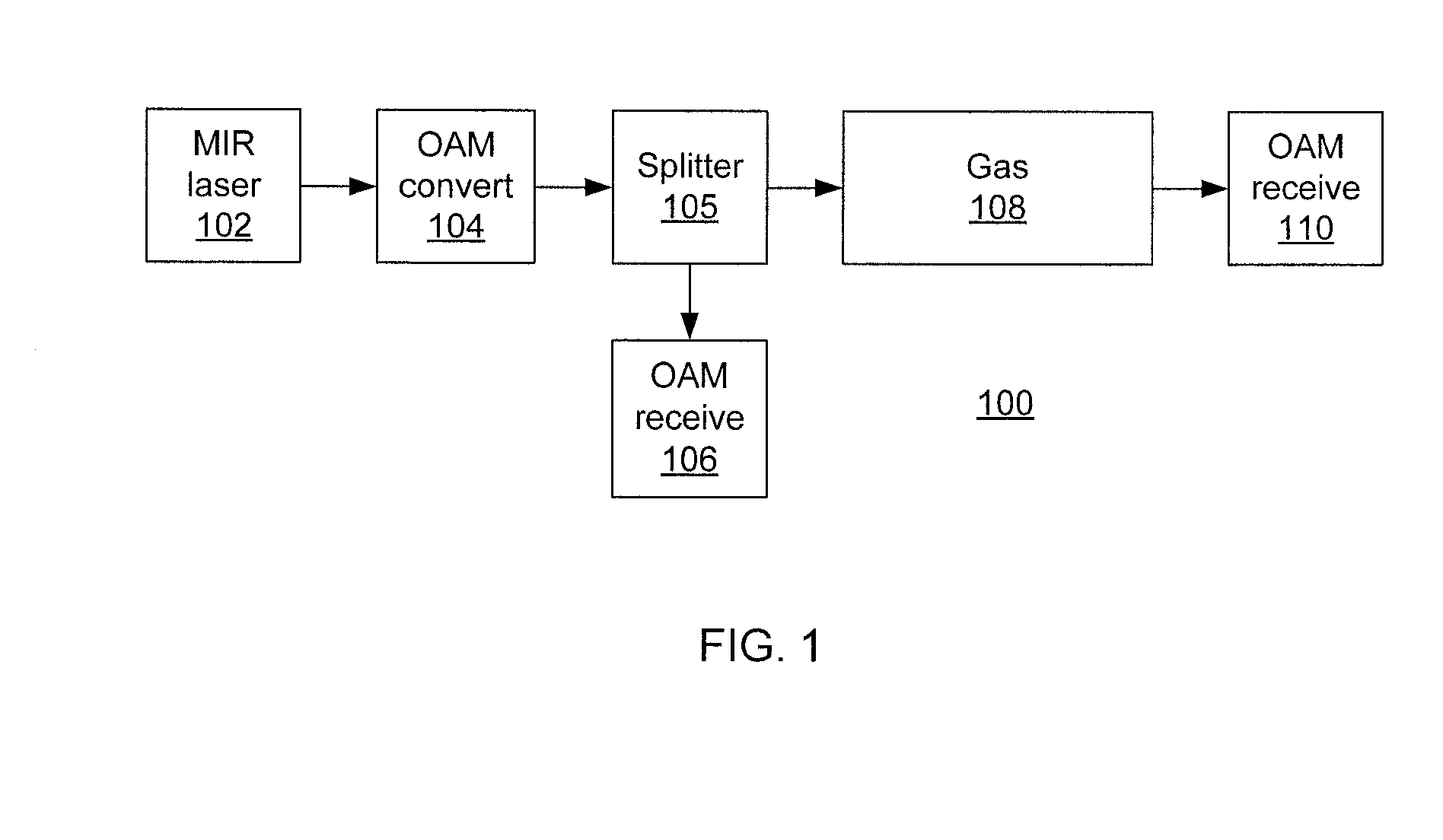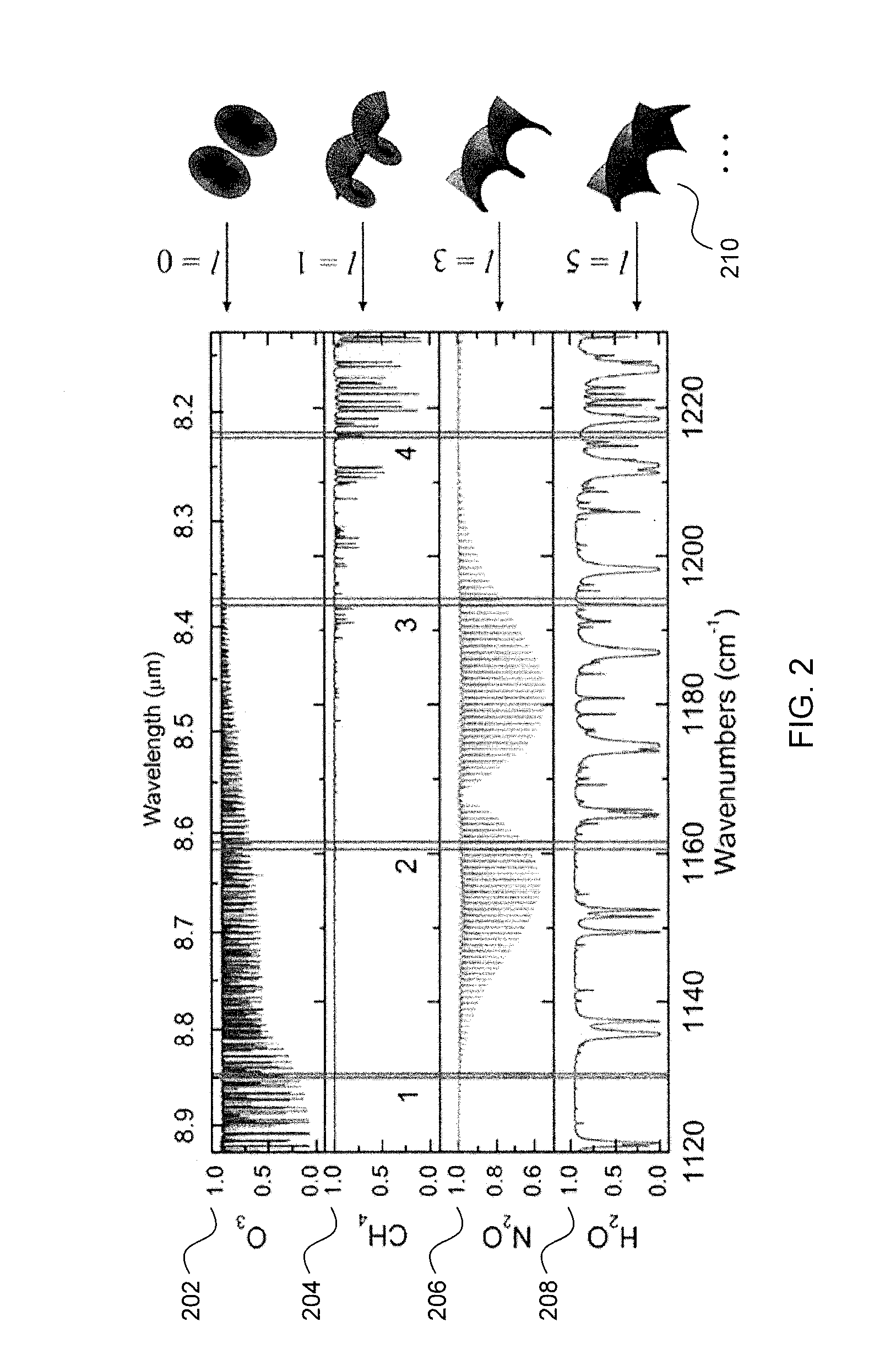Laser spectroscopic sensor using orbital angular momentum
- Summary
- Abstract
- Description
- Claims
- Application Information
AI Technical Summary
Benefits of technology
Problems solved by technology
Method used
Image
Examples
Embodiment Construction
[0015]The present embodiments provide a high-performance, cost-effective, networked trace-gas sensor. In particular, the present embodiments employ the orbital angular momentum (OAM) of light, which provides a measurement that is orthogonal to conventional measurements such as wavelength, phase, amplitude, and polarization, thereby improving sensitivity and extracting more information from gas molecules in contrast to single-mode approaches.
[0016]OAM is linked to the spatial distribution of the electric field of light and provides parallel channels, each being an independent orthogonal spatial mode, making it appropriate for the detection of broad-band absorbers and multiple absorption lines. The alteration of any single OAM state in free-space can be detected in a manner similar to signals in multi-mode fibers (MMFs), where each light beam with OAM serves as a carrier of information, with both spatial and polarization degrees of freedom. The monitored gas will alter the OAM states ...
PUM
 Login to View More
Login to View More Abstract
Description
Claims
Application Information
 Login to View More
Login to View More - R&D
- Intellectual Property
- Life Sciences
- Materials
- Tech Scout
- Unparalleled Data Quality
- Higher Quality Content
- 60% Fewer Hallucinations
Browse by: Latest US Patents, China's latest patents, Technical Efficacy Thesaurus, Application Domain, Technology Topic, Popular Technical Reports.
© 2025 PatSnap. All rights reserved.Legal|Privacy policy|Modern Slavery Act Transparency Statement|Sitemap|About US| Contact US: help@patsnap.com



